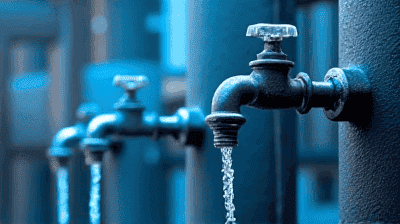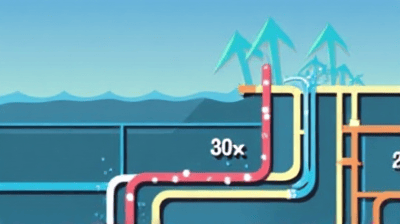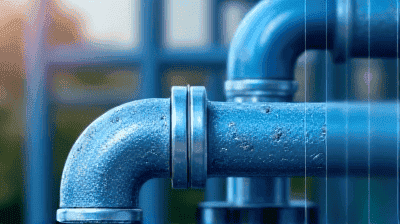
Water is an essential resource for life, yet it is increasingly under threat from pollution, climate change, and inefficient infrastructure. With global populations rising and the demand for clean water intensifying, many regions are facing significant water scarcity challenges. In response to these issues, innovative technologies are emerging, including smart water grids equipped with advanced sensors that play a crucial role in minimizing wastage and preventing leaks.
A smart water grid combines traditional water distribution systems with modern technology to create a more efficient, responsive, and sustainable water management framework. By integrating sensors, data analytics, and automated control systems, smart water grids allow for real-time monitoring of water usage, leak detection, and system optimization.
Many existing water distribution systems are aging and inefficient, leading to significant water loss due to leaks and infrastructural failures. According to the American Society of Civil Engineers, approximately two trillion gallons of treated water are lost every year in the United States due to leaks in aging pipes. This waste not only contributes to water scarcity but also strains utilities, leading to higher operational costs and environmental degradation.
Smart water grids are designed to address these issues by leveraging technology to improve water conservation and enhance the reliability of water supply networks.

At the core of smart water grids are a network of sensors deployed throughout the water distribution system. These sensors are responsible for collecting data related to water flow, pressure, temperature, and water quality. Common types of sensors used in smart water grids include:
Flow Sensors: Measure the volume of water flowing through pipes, allowing for the detection of leaks.
Pressure Sensors: Monitor pressure levels in the system to identify anomalies that may indicate leaks or ruptures.
Water Quality Sensors: Analyze the chemical composition of water to detect contamination or degradation in water quality.
The data collected by these sensors is transmitted in real time to a centralized system for analysis. Many smart water grids utilize wireless communication technologies, such as LoRaWAN, NB-IoT, or cellular networks, to ensure that data is sent efficiently and reliably.
Once the data reaches the central system, advanced analytics, including machine learning and predictive modeling, are applied. These analytical tools help identify patterns in water usage, predict potential failures in the system, and provide insights for optimizing operations.
In addition to data collection and analysis, smart water grids often include automated control systems. These systems can adjust water distribution operations in response to the insights gained from data analysis. For example, if a leak is detected, the system can automatically shut off water flow to the affected section of the grid, preventing further loss.
Automated systems can also optimize pressure levels and flow rates, reducing the risk of leaks and improving overall system efficiency.
Smart water grids can enhance user engagement by providing consumers with real-time information about their water usage. Mobile applications and online dashboards allow users to monitor their consumption patterns, receive alerts about leaks, and access tips for water conservation. This feedback encourages responsible water use and fosters a culture of conservation among consumers.
The implementation of smart water grids offers numerous benefits for both utilities and consumers, as well as for the environment:
One of the most significant advantages of smart water grids is their ability to detect leaks early. By continuously monitoring the system, sensors can identify sudden changes in flow or pressure that suggest a leak. Rapid detection allows for timely repairs, minimizing water loss and reducing the need for extensive infrastructure upgrades.
Smart water grids facilitate improved water conservation by providing real-time data on usage patterns. This information enables utilities to implement targeted conservation programs and incentivize consumers to reduce their consumption. As a result, communities can achieve substantial reductions in water waste.
With real-time monitoring and predictive analytics, smart water grids enhance the reliability of water supply systems. By identifying potential issues before they escalate, utilities can take proactive measures to maintain service levels and prevent disruptions.
The operational efficiency gained from smart water grids translates into cost savings for utilities and consumers alike. Reduced water loss, optimized maintenance strategies, and lower energy consumption contribute to lower operational costs, ultimately benefiting ratepayers.
By reducing water waste and optimizing resource use, smart water grids contribute to environmental sustainability. Efficient water management helps prevent over-extraction from natural sources, protects ecosystems, and supports overall ecological balance.
Smart water grids provide utilities with actionable data, allowing for informed decision-making. Utilities can analyze historical consumption patterns, predict future demand, and allocate resources more effectively. This data-driven approach supports long-term planning and enhances operational resilience.

Smart water grids have diverse applications across various sectors, including municipal water systems, industrial operations, and agricultural practices:
Municipalities are increasingly adopting smart water grids to manage their water supply networks more effectively. By implementing sensor networks to monitor distribution systems, cities can minimize leaks, optimize maintenance schedules, and engage with residents on water conservation efforts.
Industries that rely heavily on water, such as manufacturing, food processing, and energy production, can benefit from smart water grids. These systems enable companies to monitor their water usage, identify inefficiencies, and comply with regulations regarding water management and sustainability.
In agriculture, smart water grids can optimize irrigation practices. Sensors placed in fields can monitor soil moisture levels and weather conditions, enabling farmers to irrigate crops efficiently. This precision agriculture approach conserves water while maximizing crop yields.
As urban areas evolve into smart cities, integrating smart water grids with other smart infrastructure becomes crucial. Coordinated systems can monitor multiple resources, promoting sustainability and resilience against climate fluctuations.
Smart water grids can enhance resilience during natural disasters, such as floods or droughts. By providing real-time data on water supply and demand, utilities can better respond to emergencies and allocate resources effectively.
Several cities and organizations around the world have successfully implemented smart water grid technologies, yielding positive results in terms of leak reduction and water conservation:
The Los Angeles Department of Water and Power has deployed smart water meters and sensors across its distribution network. By using real-time data analytics, the city has significantly reduced the incidence of leaks and water losses, achieving commendable savings in both water and operational costs.
Singapore is known for its advanced water management strategies, including the implementation of smart water grids. The city has employed a comprehensive network of sensors to monitor water quality, detect leaks, and optimize water distribution. As a result, Singapore has successfully achieved high water resilience despite its limited natural water resources.
Amsterdam has integrated smart water management solutions within its existing infrastructure. By utilizing sensors and data analytics, the city has improved its capability to monitor water networks and respond to issues in real-time. The project has demonstrated significant reductions in water leakage, leading to resource conservation and cost savings.
Johannesburg has initiated a project aimed at upgrading its water infrastructure to incorporate smart technologies. By implementing sensor networks to monitor water pressure and flow, the city has gained improved visibility into its distribution system, resulting in enhanced leak detection and overall water conservation efforts.
Cape Town faced severe water supply challenges during a historic drought. In response, the city integrated smart metering systems to monitor water usage across households and businesses. This initiative helped raise awareness about water consumption and allowed officials to implement targeted conservation measures, ultimately leading to improved water management.

While the benefits of smart water grids are significant, several challenges and considerations must be addressed for successful implementation:
The transition to smart water grids requires substantial upfront investment in infrastructure, technology, and training. Utilities may face financial constraints in funding the initial setup and may need to seek financial support or partnerships.
As smart water grids rely heavily on data collection and transmission, concerns about data security and privacy must be addressed. Ensuring that consumer data is adequately protected and that systems are safeguarded against cyber threats is crucial for maintaining public trust.
Existing water infrastructure may pose challenges when integrating smart technologies. Utilities must navigate compatibility issues and develop strategies for incorporating sensors and automation into their established systems effectively.
Utilities must invest in training personnel to manage and maintain smart water grid technologies. Developing the necessary skills to analyze data and respond effectively to real-time information is essential for optimizing operations.
For smart water grid initiatives to succeed, community engagement is critical. Raising awareness about the benefits of water conservation and the role of technology can foster public support and encourage responsible water use.
The future of smart water grids looks promising, with ongoing advancements in technology and data analytics paving the way for more efficient water management:
As machine learning and artificial intelligence technologies advance, smart water grids will become more adaptive and predictive. These capabilities will enable utilities to anticipate issues, optimize operations, and enhance overall system reliability.
User-friendly interfaces and visualization tools will empower consumers and utilities to access and understand water usage data more effectively. These tools can facilitate informed decision-making and encourage community engagement in conservation efforts.
Innovations in sensor technologies will lead to the development of more sensitive and versatile sensors that can monitor additional parameters, such as water temperature, chemical contaminants, or biological indicators.
Collaboration among utilities, technology providers, researchers, and local communities will be vital for advancing smart water grid initiatives. Knowledge sharing and partnerships can facilitate the adoption of best practices and promote innovation in water management.
Supportive policies and regulatory frameworks will encourage the adoption of smart water grid technologies. Governments and agencies can promote investment in infrastructure, encourage public-private partnerships, and establish standards for data privacy and security.
Smart water grids represent a significant advancement in water management, harnessing the power of technology to prevent leaks, reduce waste, and enhance the sustainability of water distribution systems. By integrating sensors, data analytics, and automation, these systems are transforming how utilities manage water resources and engage with consumers.
The benefits of smart water grids are manifold, ranging from improved leak detection and water conservation to enhanced system reliability and environmental sustainability. As global water challenges continue to escalate, the implementation of smart technologies becomes increasingly essential for ensuring a secure and efficient water supply.
Investing in smart water grids is not only a technological imperative; it is a critical step toward achieving long-term water resilience and environmental stewardship. By adopting innovative solutions, communities can safeguard their water resources for generations to come.